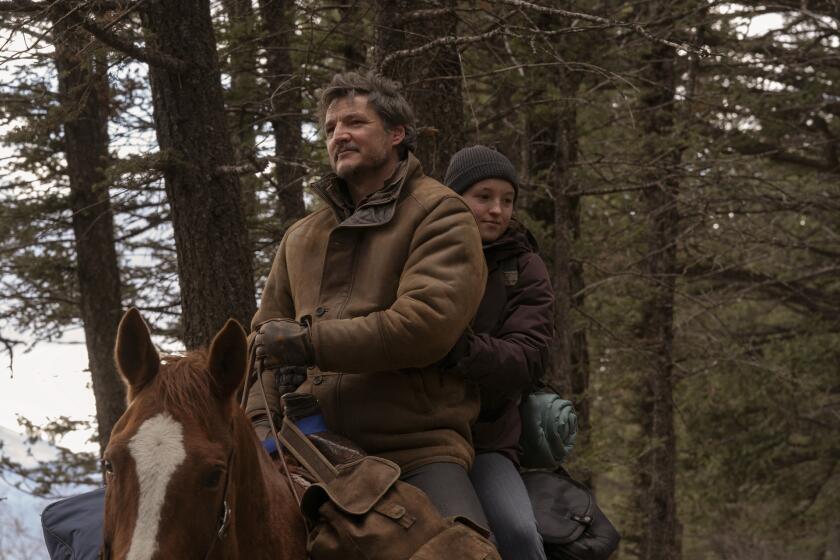Not Just for Kids: ‘The Mostly True Story of Jack’
- Share via
The Mostly True Story of Jack
A Novel
Kelly Barnhill
Little, Brown: 323 pp., $16.99, ages 8 and up
Fantastical middle-grade mysteries have long been populated with protagonists confronted with evildoing and tasked with righting wrongs. A negligent parent is par for the course, as are the usual archetypal go-tos of modern storytelling — witches and werewolves. But “The Mostly True Story of Jack” offers a unique opponent — a soul-snatching “Lady” who lives in a “world under the world,” opening up chasms in Iowa cornfields and gobbling down kids.
It’s a creepy concept, to be sure, but author Kelly Barnhill leavens the horror with understated humor in this whimsical rumination on hearth and home.
“The Mostly True Story of Jack” opens with Wendy and Frankie — 12-year-old twins whose lives were forever changed four years earlier when Frankie was “taken away” and “returned, marked and silent, two months later.” Frankie no longer talks. The puffy scars on his face remain so pronounced that the local bully calls him “Slasher Face.” Wendy is his protector.
It’s unlikely that Jack would ever have met the twins, but when his parents split up and send Jack from their San Francisco home to live with relatives in the Midwestern farm community of Hazelwood, he’s immediately thrust into a mystery — not only of what happened to Frankie but of what’s happening to the entire town.
Jack senses something is amiss from the moment he arrives at his aunt and uncle’s house. The doorways feel hot to the touch and the floorboards occasionally rumble. Unbeknown to Jack, other kids in town are feeling equally unusual sensations, like a buzzing underfoot or an uncontrollable, inexplicable itching.
In her children’s book debut, Barnhill’s background as a poet is expressed with imaginatively humorous details, such as air that smells “sweet and sick all at once, like rat poison dipped in candy,” and a father who looks “as though he were trying to suck his face right into his nostrils.”
There’s a dry wit and playfulness to Barnhill’s writing that recalls Lemony Snicket and Blue Balliett. Like Snicket’s “A Series of Unfortunate Events” and Balliett’s “Chasing Vermeer,” Barnhill leverages humor to ratchet up the mystery and temper some of the scarier aspects of the story line as Jack literally unearths the truth about Hazelwood and his relatives.
A high-concept take on the meaning of home and the importance of family, “The Mostly True Story of Jack” is a delightfully unusual gem.
More to Read
The biggest entertainment stories
Get our big stories about Hollywood, film, television, music, arts, culture and more right in your inbox as soon as they publish.
You may occasionally receive promotional content from the Los Angeles Times.










